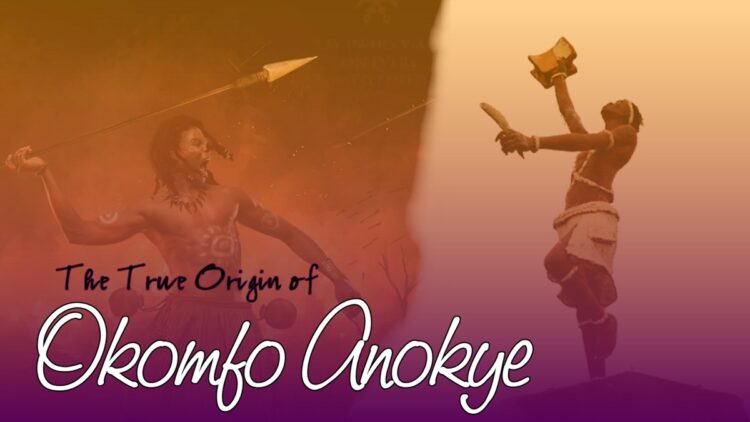The origins of the legendary fetish priest, Okomfo Anokye, who is famed for commanding the Golden Stool from the sky, have long been a subject of debate. While the Ashanti people hold him in high regard as a central figure in their history, new insights suggest that Okomfo Anokye was originally an Ewe spiritual leader, deeply connected to Togbi Tsali, his twin brother.
The Twin Brothers: Tsala (Okomfo Anokye) and Tsali
According to Ewe oral history, Okomfo Anokye was born as Amega Atsu Tsala, a twin to Amega Tse Tsali. Their father was Togbui Akplormada, and both brothers were endowed with extraordinary spiritual powers. Tsala, who would later be known as Okomfo Anokye, left his birthplace of Notsie at a young age, eventually settling in Awukugua in what is now Ghana’s Eastern Region. His immense spiritual abilities earned him the title of “Okomfo Notsie” or “Notsie Priest.”
Historical accounts indicate that in 1695, Tsala (Okomfo Anokye) returned to Notsie to consult his twin brother, Tsali, before accepting an invitation from King Osei Tutu of the Ashanti Kingdom to help establish their empire. His role in the kingdom’s expansion, including the summoning of the Golden Stool, solidified his legendary status.
The Connection Between the Ashanti and Ewe Peoples
Evidence of Okomfo Anokye’s Ewe heritage can be seen in the presence of Anloga in Kumasi, demonstrating a historical bond between the two ethnic groups. His journey from Notsie to Ashanti land and his eventual integration into their culture highlight a shared heritage that should be acknowledged and preserved.
The Mystical Feats of Tsala and Tsali
The twins, Atsu Tsala (Okomfo Anokye) and Tse Tsali, were known for their supernatural abilities. Their father, Akplormada, tested their powers on several occasions. One such instance involved Akplormada removing his intestines and commanding Tsali to find a suitable place to return them. However, through his own spiritual prowess, Akplormada tricked Tsali and reinserted his intestines himself, showcasing his superiority.
Tsali, on the other hand, was known for performing incredible feats, including controlling nature and commanding animals. In one dramatic event, the people of Tongu attempted to drown Tsali by tying him to granite rocks and casting him into the Volta River. However, three days later, he emerged unharmed, floating on the back of a crocodile while holding the rocks that were meant to drown him.
The Disappearance of the Twin Mystics
Neither Atsu Tsala (Okomfo Anokye) nor Tse Tsali is recorded to have died a natural death. According to oral history, both men mysteriously disappeared, and their final resting places remain unknown. Their legacies, however, continue to influence spiritual practices and cultural narratives in both Ewe and Ashanti traditions.
Conclusion
The story of Okomfo Anokye’s true origins as an Ewe Togbi challenges conventional narratives and highlights the rich interconnected histories of the Ewe and Ashanti peoples. Understanding this shared past fosters unity and recognition of the diverse influences that shaped West African civilizations.
















